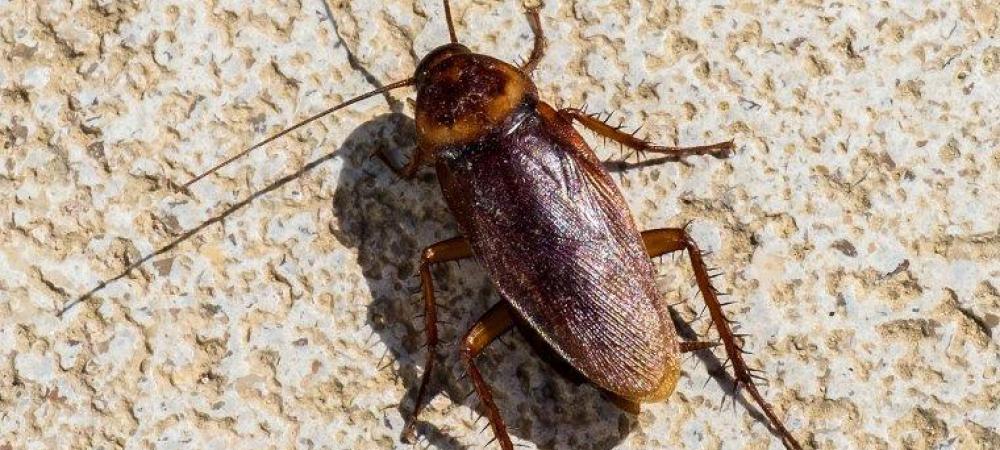
I Thought Cockroaches Were Supposed to Be Small: Surviving Florida's Flying Palmetto Bugs
Palmetto bugs, also known as American cockroaches, are much larger than their common household counterparts, often reaching lengths of 1.5 to 2 inches. These flying pests are prevalent in Florida due to the warm, humid climate. While they prefer outdoor habitats, palmetto bugs frequently invade homes seeking food and shelter. Proper identification, prevention methods, and professional pest control are key to managing these unwelcome visitors effectively.
What are Palmetto Bugs?
Palmetto bugs (Periplaneta americana) are a species of large cockroach native to tropical and subtropical regions. Despite their name, they're found throughout the southern United States, with Florida being a particular hotspot. These insects are often mistaken for water bugs or tree roaches due to their size and habitat preferences.
Key characteristics of palmetto bugs include:
- Reddish-brown color with a yellowish figure-eight pattern on the head
- Large size, typically 1.5 to 2 inches long
- Wings that allow for short bursts of flight
- Nocturnal behavior, often seen scurrying away when lights are turned on
Why Palmetto Bugs Thrive in Florida
Several factors contribute to the prevalence of palmetto bugs in Florida:
- Climate: The warm, humid weather provides ideal conditions for these insects to breed and thrive year-round.
- Vegetation: Florida's lush landscape, including palm trees and other tropical plants, offers ample hiding spots and food sources.
- Moisture: Abundant rainfall and high humidity levels create the moist environments that palmetto bugs prefer.
- Urban development: As cities expand, these adaptable pests find new habitats in human structures and landscaping.
Identifying Palmetto Bugs vs. Other Cockroaches
Palmetto Bugs (American Cockroaches)
- Description: Large, reddish-brown with a yellowish figure-eight pattern behind the head
- Size: 1.5 to 2 inches long
- Habitat: Prefer outdoor areas but will enter homes
- Flight ability: Can fly short distances, especially when startled
German Cockroaches
- Description: Light brown to tan with two dark parallel lines on the pronotum
- Size: 0.5 to 0.6 inches long
- Habitat: Primarily indoors, especially in kitchens and bathrooms
- Flight ability: Rarely fly, prefer to run
How to Prevent Palmetto Bug Infestations
- Seal entry points: Inspect your home's exterior for cracks, gaps, and holes. Use caulk or weatherstripping to seal potential entry points around windows, doors, and utility lines.
- Reduce moisture: Fix leaky pipes, use dehumidifiers in damp areas, and ensure proper drainage around your home's foundation.
- Maintain landscaping: Keep plants trimmed away from your house, remove leaf litter, and store firewood away from the structure.
- Practice good sanitation: Clean up food spills promptly, store food in airtight containers, and regularly empty trash cans.
- Use outdoor lighting wisely: Replace white bulbs with yellow "bug lights" to reduce attraction to your home's exterior.
Florida-Specific Considerations for Palmetto Bug Control
- Year-round vigilance: Florida's climate allows palmetto bugs to remain active throughout the year, requiring consistent prevention efforts.
- Hurricane preparedness: Severe weather can drive palmetto bugs indoors en masse. Ensure your home is well-sealed before storm season.
- Native vegetation: While palm trees and other tropical plants are beautiful, be mindful of their potential to harbor palmetto bugs near your home.
- Water management: Florida's high water table and frequent rain can create ideal breeding conditions. Ensure proper drainage and eliminate standing water around your property.
Common Mistakes in Palmetto Bug Management
- Relying solely on DIY methods: While home remedies can help, they often fall short in addressing large-scale infestations. Professional pest control services have access to more effective treatments and can develop comprehensive management plans.
- Ignoring outdoor habitats: Focusing only on indoor treatments neglects the primary living areas of palmetto bugs. Comprehensive control requires addressing both indoor and outdoor environments.
- Overlooking moisture issues: Failing to address leaks, drainage problems, or high humidity levels will continue to attract palmetto bugs to your property.
Frequently Asked Questions
Are palmetto bugs dangerous?
While palmetto bugs don't pose significant health risks, they can contaminate food and surfaces with bacteria. Their presence can also trigger allergies and asthma in some individuals.
Can palmetto bugs infest my car?
Yes, palmetto bugs can inhabit vehicles, especially if food crumbs are present. Regular cleaning and avoiding leaving food in your car can help prevent infestations.
How long do palmetto bugs live?
In optimal conditions, palmetto bugs can live up to two years. Female palmetto bugs can produce up to 150 offspring during their lifetime, highlighting the importance of early intervention.
Professional Pest Control in Florida
While DIY methods can help manage small palmetto bug problems, persistent or large-scale infestations often require professional intervention. The experts at Deans Services have extensive experience dealing with Florida's unique pest challenges, including palmetto bugs. Our team can provide targeted treatments, identify potential entry points, and offer ongoing prevention strategies to keep your home palmetto bug-free. Contact Deans Services today for a comprehensive pest inspection and customized control plan tailored to your specific needs.
Last updated: 12/24/2025
